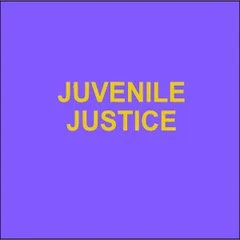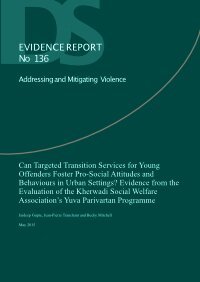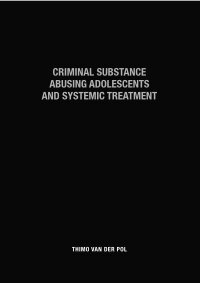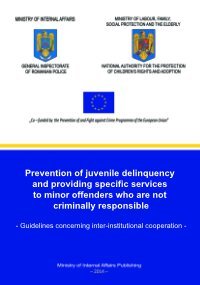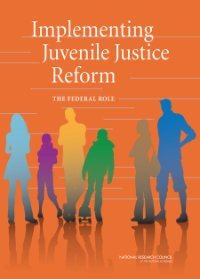By The Children's Commissioner (UK)
This report aims to develop a comprehensive understanding of the educational journeys of children in secure settings. It examines their experiences before and during their time in custody, reflecting these in their own voices so that they are central to educational reforms and interventions. This report is based on analysis of: • quantitative administrative data covering the 950 children and young people educated in England then held in secure settings in England and Wales for any period of time between September 2017 and August 2022; i • qualitative interviews with 13 children and six staff members in youth secure settings in England and Wales conducted between June and July 2024; • the education policies as of September 2024 of seven out of the 14 secure settings that accommodate children on remand or sentenced in England and Wales; and • 390 responses from The Big Ambition survey received September 2023 to January 2024 from children in secure settings in England. ii This report found that children in secure settings often had severely disrupted experiences of education, with many recounting a poor experience of school and a multitude of challenges before entering a secure setting. Many children expressed that they wished they had had greater support at school. Some core challenges included: • History of poor attendance: 77% of children in secure settings were persistently or severely absent in their most recent year at a state-funded school • Disproportionate additional needs: Children in secure settings were five times more likely to have an Education, Health and Care Plan (EHCP) compared to pupils in state-funded education and 1.5 times as likely to receive Special Educational Needs (SEN) Support; • Experiencing child poverty: Almost nine out of every 10 children in secure settings grew up in areas with above-average levels of child poverty; • History of exclusion: 25% of children in secure settings had experienced a permanent exclusion. By contrast, there were only eight permanent exclusions per every 10,000 pupils in state-funded schools in 2021/22.6 While staff in secure settings worked hard to provide a high-quality education, this report highlights the serious challenges they face delivering education. This included: • Restrictions on education choices: Children are often assigned to educational pathways based on who they could associate with safely rather than their interests or educational ability; this makes it difficult to engage children in class when they all have different levels of ability and may not have any interest in the subjects they’ve been assigned. • Limited continuity and ability to plan: A large proportion of the children are serving short sentences or on custodial remand, which can limit continuity and progress in their education. For children on custodial remand, they do not know how long they will be in custody for which can lead to their education being disrupted at short notice. • Staffing shortages: It is difficult to recruit qualified and suitable teachers capable of providing the necessary educational support and high-quality education to children with diverse and complex needs. Recommendations The Children’s Commissioner’s ambition is for every child to be prevented from being affected by violence and criminality and able to fulfil their full potential. This means that every child must grow up in a loving, homely environment with access to high-quality education, including those who need secure care. To achieve this, a number of structural changes are needed across the whole system. These were outlined in The Big Ambition7 and include: • A unique childhood identifier so that no child falls through the gaps in support; • Clear, reliable, long-term funding streams for children, based on consistent measures of local need; • A joint children’s workforce strategy to ensure those working with children are caring, professional and equipped to do their jobs, with a strong pipeline into senior leadership roles; and • The Department for Education to assume direct responsibility for the delivery of core services for children. The recommendations in Section 4 of this report have been separated into two parts. The first looks at preventative measures. It outlines the necessary changes to the school system to ensure that children are better supported at school. The second outlines that the current secure setting system is not fit-for-purpose and needs a complete redesign. While the number of children in secure settings is a very small proportion of all children, the challenges they face and often the long-term implications for public services of those challenges means reform of the youth secure estate should be considered a priority. Key recommendations for the broader education system include: • Recommendation: The government should introduce a single child plan to coordinate all multi-agency support for young people. This plan should be regularly reviewed at least every year and should always be updated if a child moves local authority. This plan should give schools the ability to commission support services from health and social care when children’s attendance starts to deteriorate. Alongside this, the government should introduce national thresholds for children’s services support, with a statutory offer of Early Help. • Recommendation: Children’s support services should be delivered on school sites to provide the targeted early help that young people need. This could include, but is not limited to, educational psychologists, speech and language therapists, Children and Adolescent Mental Health Service practitioners, social workers, youth workers, school nurses, health visitors, family liaison officers and Family Hubs. The nature of the support should match the needs of the children at the school. • Recommendation: Exclusions should always lead to an intervention. When a child is removed from the classroom, whether through internal exclusion, suspension, permanent exclusion, a managed move or implementation of a ‘part time timetable’, this should be an opportunity to learn about the child’s underlying needs. A child’s needs should be assessed and a plan to address any underlying issues should be implemented, jointly agreed with the child, school, local authority, and where applicable with the alternative provider (AP). Key recommendation for the youth justice system include: • Recommendation: An ambitious national reform that re-designs the secure care system to prioritise treating children who offend, first and foremost, as children in need of specialised support. The Department for Education (DfE) should be responsible for the delivery of all core services for children in the youth justice system and there should no longer be continued attempts to reform an unsatisfactory youth justice estate that fails to meet these children’s complex needs. This new system must be based primarily upon a therapeutic model of care developed by DfE and NHS England. It must be delivered in smaller, homely settings close to where children live and there should be a clear, time-bound plan to phase out all Young Offender Institutions (YOI) and Secure Training Centres (STC). Key interim recommendations for the youth justice system In the meantime, a number of interim recommendations are necessary to better support children currently in secure settings. These measures aim to support children’s educational experiences and care while the broader systemic reforms are developed and implemented. • Recommendation: Every secure setting must have a Youth Council where children can serve as representatives, meeting monthly and providing feedback to staff. This ensures that every child has a formalised process for expressing their voice on issues that matter to them. The views of each Youth Council should be shared to the Ministry of Justice and the Children’s Commissioner’s Office on a quarterly basis to amplify their voices and advocate for the creation of policy change that is informed by their insights and lived experiences. • Recommendation: The youth sentencing framework should be amended to prohibit sentences with custodial periods that are less than 12 months. Instead, multi-agency community-based interventions should be used to address the underlying causes of offending for children. Alongside this, strong sentencing guidelines and safeguards must be established to prevent up-tariffing. • Recommendation: Vocational education pathways provided by secure settings must always include genuine opportunities for children to undertake traineeships and job trainings in the community. Children must have the opportunity to complete all courses within a pathway to achieve a recognised qualification. Every pathway must have a direct link to how it will support their lives outside of a secure setting depending on their sentence length and how it meets regional employment and skill needs. An educational staff member role should be created that is focused on connecting local employers with children completing vocational pathways. • Recommendation: The governors of secure settings should be included in the procurement and commissioning process of education providers by the Ministry of Justice. The contract should also be amended to enable secure settings to have greater flexibility and authority to coordinate the work of education professionals with residential care, health and psychology staff to ensure a holistic and individualised approach that supports the progress of every child. Secure settings should also be able to draw upon the teaching expertise of local schools, academy trusts, colleges and alternative provisions. This might include enabling local teachers to teach at a secure setting or supporting children to continue with their existing educational courses to maintain continuity in their learning and facilitate a smoother transition back into the community
London: The Children's Commissioner, 2025. 89p.

